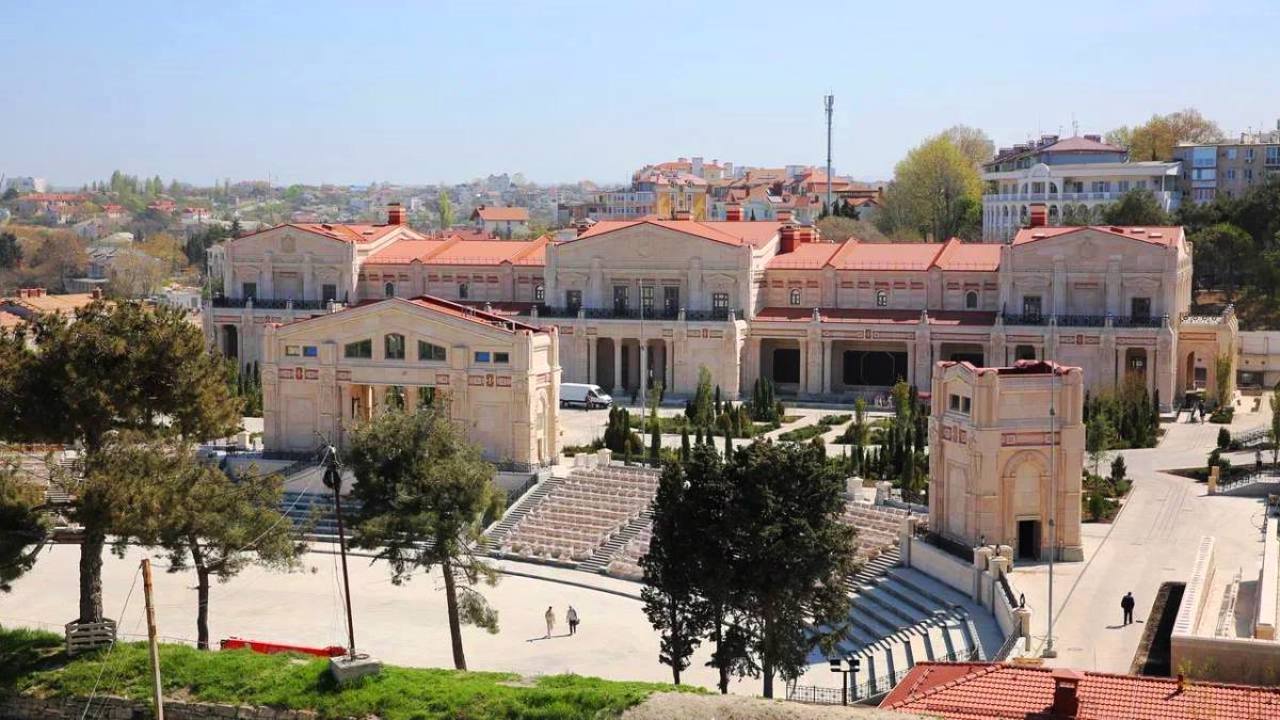The so-called archaeological park "New Chersonesus" partially covers the ancient settlement, several archaeological objects were dismantled by the occupiers and moved to another place.
The landmark of world importance, Chersonesus Tavriyskyi, located in the Crimean Sevastopol, was completely destroyed by Russian archaeologists and developers, who built several new buildings on the site of the excavations. Some archaeological finds were taken to Russian museums, reports "UP Zhyttia".
Evelina Kravchenko, a senior researcher at the Institute of Archeology of the National Academy of Sciences of Ukraine, spoke about the state of the UNESCO monument at the 3rd International Forum of the Expert Network of the Crimean Platform. According to her, the Russians are replacing the original sights with new buildings, destroying their authenticity.
"Currently, negative processes are taking place with the only monument of world importance, which we managed to nominate and include in the list of monuments in Crimea - Chersonesus Tavriysky," said the researcher.
In 2015-2016, the developers fenced off the archaeological remains on the surface: towers, walls and columns with viewing platforms. Later, on the site of the ancient citadel, an open-air theater of the ancient type was built, which creates a burden on the original structure.
Most of the found artifacts were taken to museums in Russia. Among them are frescoes, dishes, household items and icons. Subsequently, the construction of the archaeological park "New Chersonese" began on the site of the remains of the necropolis.
"The Russians didn't know anything about the geological situation at this place, so they started to remove the soil in the territory with ordinary excavators. Somehow they dug up an ancient spring there, so everything flooded," said Evelina Kravchenko.
Today, a new city has actually been built on the site of the archaeological remains. The archaeological park "New Chersonese" covers old finds, several excavated objects were gradually moved and rebuilt in another place. On the site of the hillfort, the Russians erected the Cathedral of St. Volodymyr, which is subordinated to and consecrated by the Moscow Patriarchate.
On June 23, 2013, at the 37th session of the UNESCO World Heritage Committee in Cambodia, the Tavrian Chersonese was included in the UNESCO World Heritage List. Since then, the state of the monument has not been monitored due to the occupation of Crimea by Russia in 2014.
Пам’ятка світового значення Херсонес Таврійський, що у кримському Севастополі, повністю знищена російськими археологами і забудовниками, які спорудили на місці розкопок кілька новобудов. Деякі археологічні знахідки вивезли до російських музеїв, повідомляє "УП Життя".
Про стан пам'ятки ЮНЕСКО розповіла старша наукова співробітниця Інститут археології НАН України Евеліна Кравченко на ІІІ Міжнародному форумі експертної мережі Кримської платформи. За її словами, росіяни підмінюють оригінальні пам’ятки новобудовами, руйнуючи їх автентичність.
"Зараз відбуваються негативні процеси з єдиною пам’яткою світового значення, яку ми встигли номінувати і внести у перелік пам’яток в Криму – з Херсонесом Таврійським", – розповіла дослідниця.
У 2015-2016 роках забудовники загородили оглядовими майданчиками археологічні залишки, що знаходились на поверхні: башти, стіни й колони. Пізніше на місці давньої цитаделі спорудили відкритий театр античного типу, що створює навантаження на оригінальну споруду.
Велику частину знайдених артефактів вивезли до музеїв Росії. Серед них фрески, посуд, предмети побуту та ікони. Згодом розпочалося будівництво археологічного парку "Новий Херсонес" на місці залишків некрополя.
"Росіяни нічого не тямили в геологічній ситуації на цьому місці, тому розпочали знімати ґрунт на території звичайними екскаваторами. Якимось чином вони розкопали там давнє джерело, тому все залило", – розповіла Евеліна Кравченко.
Нині на місці археологічних залишків збудували фактично нове місто. Археологічний парк "Новий Херсонес" перекриває старі знахідки, декілька розкопаних об’єктів поступово перенесли та відбудували в іншому місці. На місці городища росіяни поставили Собор святого Володимира, що підпорядковується і освячений Московським патріархатом.
23 червня 2013 року на 37-й сесії Комітету всесвітньої спадщини ЮНЕСКО у Камбоджі Херсонес Таврійський був включений до списку світової спадщини ЮНЕСКО. З тих часів моніторинг стану пам'ятки не проводився через окупацію Криму Росією у 2014 році.



